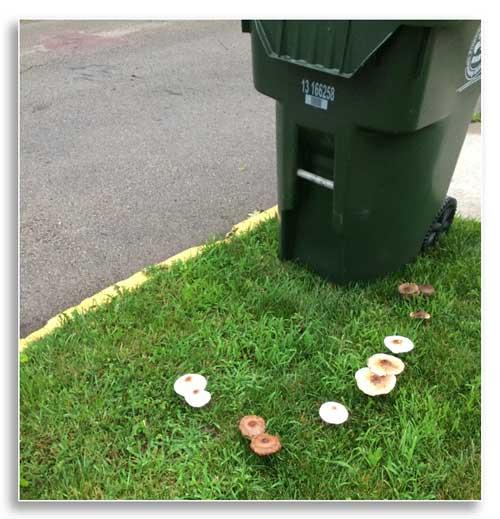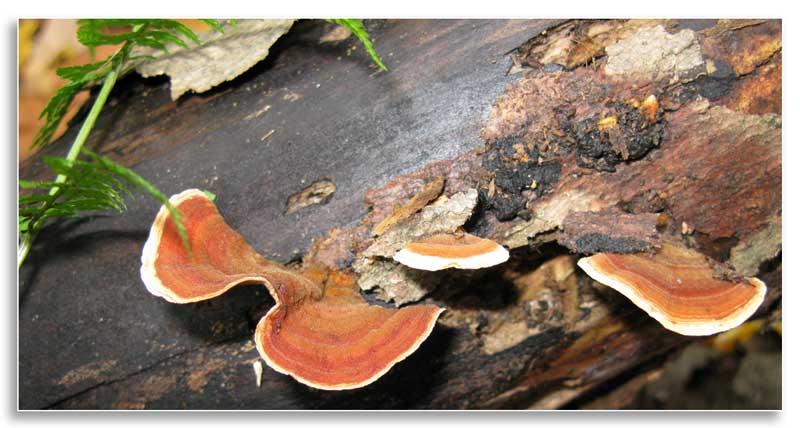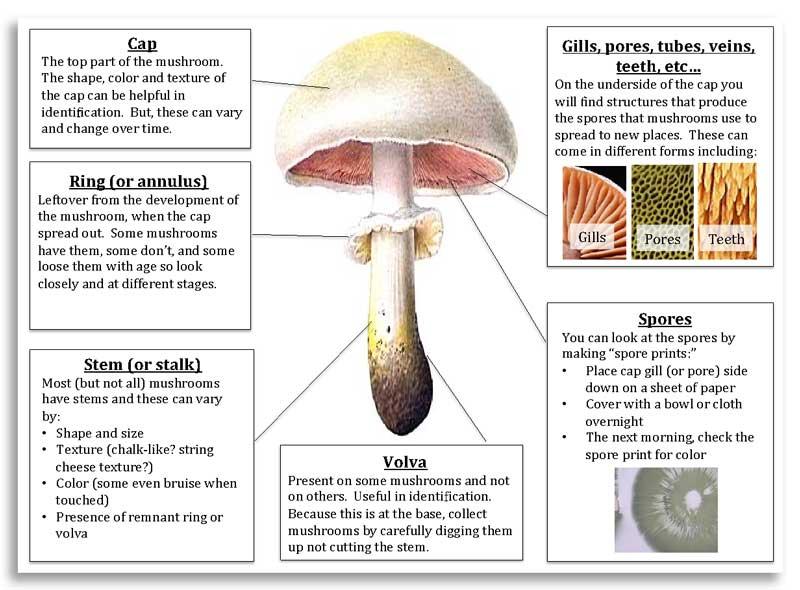Fungi: There's a Fungus Among Us
By Dr. Ellen Crocker

Mushrooms are strange and wonderful things- some are beautiful, some are ugly, some are delicious and some are deadly poisonous. Whether you are a mycophile or fungus-phobe, you’ve probably been noticing a lot more mushrooms than normal popping up on lawns, forest floors, mulch, and tree trunks this rainy summer.
But, what are mushrooms?
Mushrooms are the fruiting bodies of a fungus. Whenever you see a mushroom, imagine that under it, growing through the soil or wood, are tiny thread-like growths of a much larger fungal “body” called mycelia. In the same way that plants make fruits that contain seeds, mushrooms have spores that fungi use to spread to new areas and reproduce. These fungal mycelia may grow throughout the season but the fruiting mushrooms are ephemeral and tend to appear only every now and then. Their arrival is usually prompted by environmental conditions, like the high moisture and rain we’ve experienced this summer.
What are these fungi doing?
All sorts of things! For example, some of the fungi that produce mushrooms rot tree trunks and roots while others are mutualists, growing with and helping out the plants they are connected to. Others are recyclers, breaking down and feeding on dead plant material.

Which mushrooms are in my yard?
That is a really tough question-mushrooms are notoriously difficult to identify. But, if you look closely, you might be surprised at the incredible diversity of different fungi you find. In fact, there are estimated to be over 10,000 species in North American alone! These include mushrooms, molds, lichens and many more members of the fungal kingdom.
To help you better understand these fungal friends and foes here is a rough guide to some of the basic mushroom components:

A note to any aspiring edible-mushroom hunters...
There’s an old saying: “There are old mushroom hunters and there are bold mushroom hunters. But there are no old, bold mushroom hunters.” Only a few mushrooms are deadly but many can cause severe illness and each year unprepared, inexperienced and/or unlucky mushroom hunters are poisoned. Don’t be one of them!
Collecting edible mushrooms is similar to driving a car in that both are very dangerous but can be done safely with training, patience and practice. If you want to eat the mushrooms you collect, first learn how to identify them and to distinguish them from similar poisonous mushrooms. Don’t trust folklore about how to identify poisonous mushrooms. Instead, train with people who know what they are doing, get your hands on some good identification guides and double-check with experts, especially when you are getting started.
Don’t risk it - remember that delicious edibles can be purchased from many grocery stores and are not worth the potential consequences (or even the worry) if you are not 100% sure.
Photography
- Mushrooms springing up everywhere when conditions are right (E. Crocker)
- Mushrooms breaking down and feeding on dead wood (E. Crocker)
- Anatomy of a mushroom (E. Crocker)
About the Author
Dr. Ellen Crocker is an Assistant Professor of Forest Health Extension in the Department of Forestry and Natural Resources at the University of Kentucky. Her background is in plant pathology and her current focus is on education and outreach related to forest health issues such as invasive plants, insects and pathogens. She is particularly interested in new ways to engage people about the health of their trees, including the development of the HealthyWoods app to assist landowners in assessing and improving their woods. In addition, she conducts a range of applied research related to forest health and the management of invasive species. Email @ e.crocker@uky.edu
